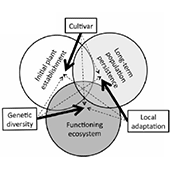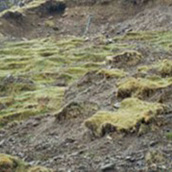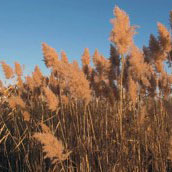The true test of our understanding of ecological systems goes beyond predicting the ecosystem consequences of changes in biodiversity and climate stressors. The most applied aspect of my work asks how we can actively regain biodiversity and ecosystem functioning in ecological restorations. We are particularly focusing on how and when to use locally adapted genotypes, key trait genotypes, and genotypic diversity in a way that best matches environmental heterogeneity with spatial arrangement of plants in restored landscapes.
 Genetic Diversity
Genetic Diversity Grassland Management
Grassland Management Biogeography
Biogeography
Collaborators: Karin Kettenring, Carrie Reinhardt-Adams, Kristen Mercer, Andrew Kulmatiski, Nico Eisenhauer
Selected Publications:
| Year | Citation | |
|---|---|---|
| 2017 | Dee, L., S. Allesina, A. Bonn, A. Eklöf, S. D. Gaines, J. Hines, U. Jacob, E. McDonald-Madden, H. Possingham, M. Schröter, R. M. Thompson. 2017. Operationalizing network theory for ecosystem service assessments. Trends in Ecology and Evolution 32: 118-130 | link |
| 2014 | Hines, J.E., M. Reyes, T. Mozdzer, M.O. Gessner. 2014. Genotypic trait variation modifies effects of climate warming and nitrogen deposition on litter mass loss and microbial respiration. Global Change Biology 20: 3780-3789 | |
| 2014 | Kettenring, K., C. Reinhardt-Adams, K. Mercer, J. E. Hines. 2014. Application of genetic diversity-ecosystem function research to ecological restoration. Journal of Applied Ecology 51: 339-348. *Selected to be highlighted as an “Editor’s Choice” article | |
| 2014 | Kulmatiski, A., J.E. Hines, N. Eisenhauer. 2014 Soil organisms effects on grassland production and diversity. In: Grassland Biodiversity and Conservation in a Changing World. Editors: Pierre Mariotte and Paul Kardol, Publisher: Nova Science |
